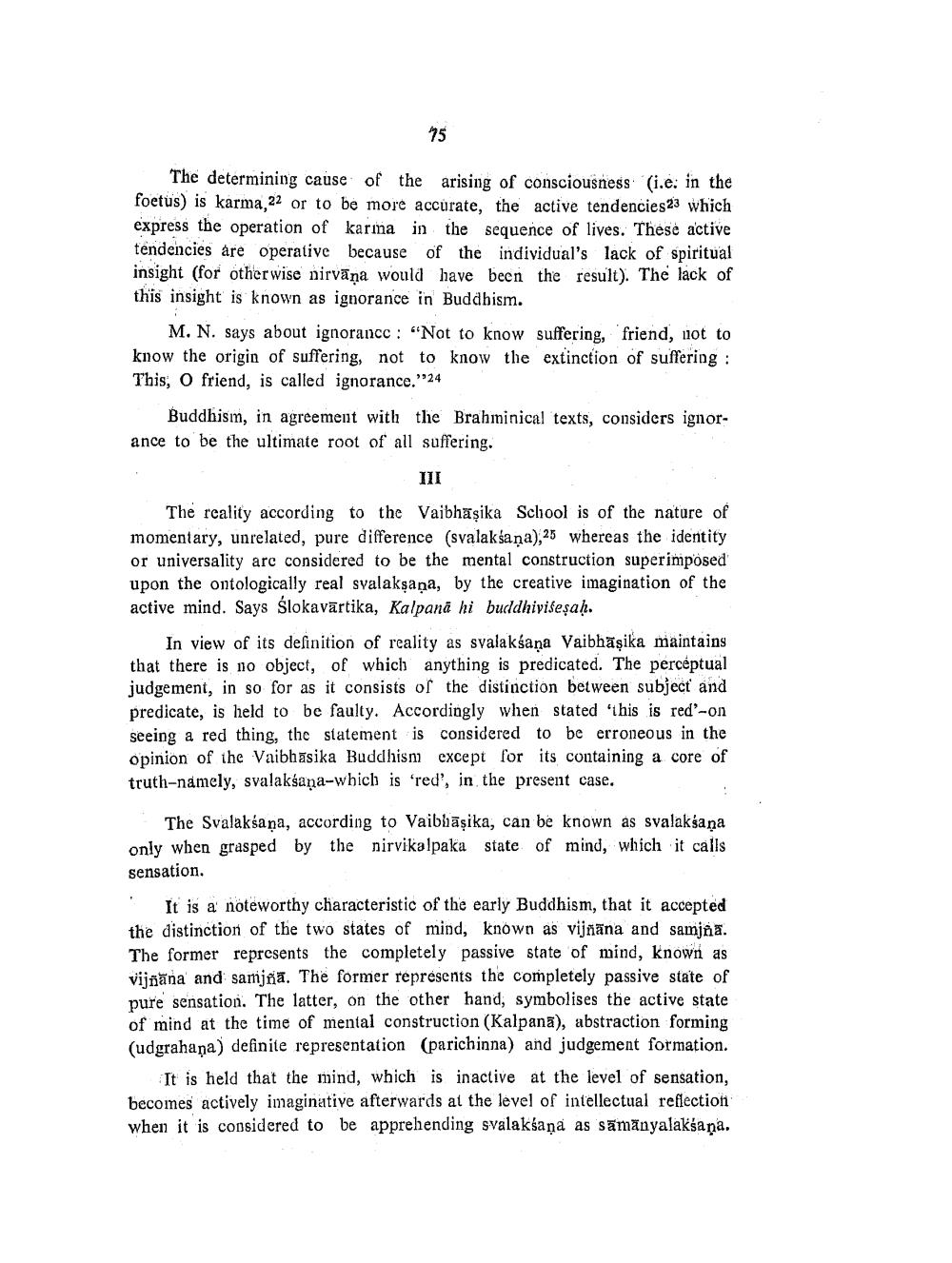________________
The determining cause of the arising of consciousness (i.e: in the foetus) is karma, 22 or to be more accurate, the active tendencies23 which express the operation of karma in the sequence of lives. These active tendencies are operative because of the individual's lack of spiritual insight (for otherwise nirvana would have been the result). The lack of this insight is known as ignorance in Buddhism.
M. N. says about ignorance : "Not to know suffering, 'friend, not to know the origin of suffering, not to know the extinction of suffering : This, O friend, is called ignorance.''24
Buddhism, in agreement with the Brahminical texts, considers ignorance to be the ultimate root of all suffering.
111
The reality according to the Vaibhāșika School is of the nature of momentary, unrelated, pure difference (svalaksaņa),25 whereas the identity or universality are considered to be the mental construction superimposed upon the ontologically real svalakşaņa, by the creative imagination of the active mind. Says Slokavārtika, Kalpana hi buddhivišeșaḥ.
In view of its definition of reality as svalaksana Vaibhäşika maintains that there is no object, of which anything is predicated. The perceptual judgement, in so for as it consists of the distinction between subject and predicate, is held to be faulty. Accordingly when stated this is red-on seeing a red thing, the statement is considered to be erroneous in the opinion of the Vaibhasika Buddhism except for its containing a core of truth-namely, svalaksaņa-which is 'red', in the present case.
The Svalaksaņa, according to Vaiblāşika, can be known as svalakšaņa only when grasped by the nirvikalpaka state of mind, which it calls sensation.
It is a noteworthy characteristic of the early Buddhism, that it accepted the distinction of the two states of mind, known as vijnana and samjna. The former represents the completely passive state of mind, known as vijñāna and samjña. The former represents the completely passive state of pure sensation. The latter, on the other hand, symbolises the active state of mind at the time of mental construction (Kalpana), abstraction forming (udgrahana) definite representation (parichinna) and judgement formation.
It is held that the mind, which is inactive at the level of sensation, becomes actively imaginative afterwards at the level of intellectual reflection when it is considered to be apprehending svalaksaņa as sāmänyalaksana.




